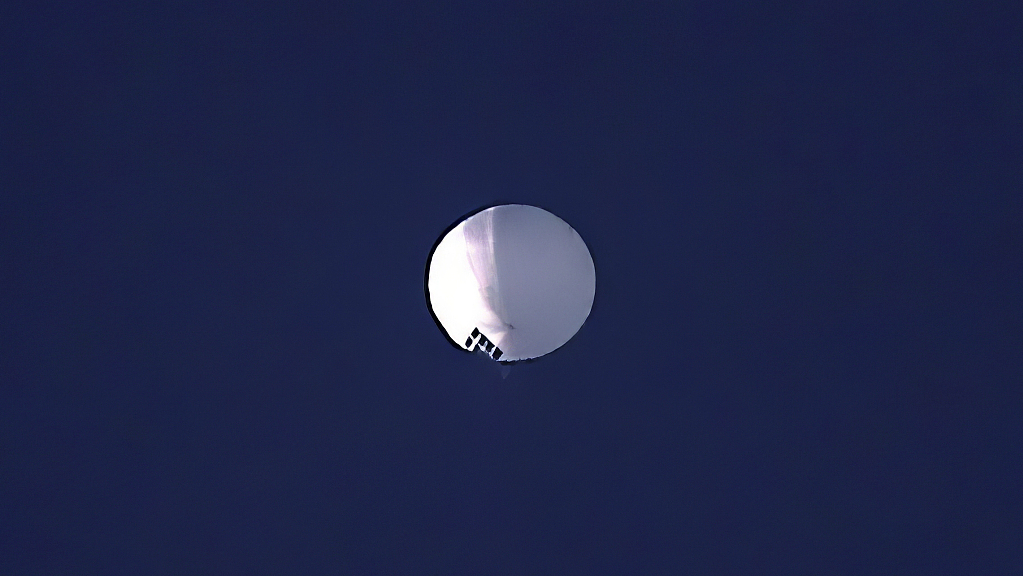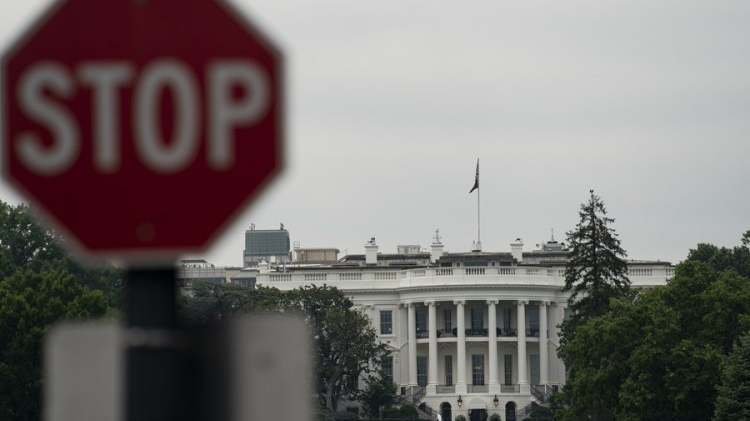
A high altitude airship floats over Billings, Montana, the U.S., Feb 1, 2023. /VCG
A high altitude airship floats over Billings, Montana, the U.S., Feb 1, 2023. /VCG
Editor's note: Kong Lingjie is professor of public international law and the Associate Dean for Research at the Institute for International Studies at Wuhan University. The article reflects the author's opinions and not necessarily the views of CGTN.
On April 3, the NBC posted an article saying that the Chinese civilian unmanned airship, which was shot down by the U.S., "was able to gather intelligence from sensitive U.S. military sites." The airship incident between the United States and China has captured the attention of the world again. This article explores some international legal issues surrounding this incident. Is it lawful for the U.S. to shoot down the airship by force?
The airship incident and differences between China and the U.S.
On February 2, the U.S. Pentagon publicly acknowledged that it "has detected and is tracking a high altitude surveillance balloon that is over the continental United States." On February 4, a U.S. fighter aircraft, an F-22 Raptor fighter, fired an AIM-9X Sidewinder missile at the "balloon" and successfully brought it down over the waters off the coast of South Carolina in U.S. airspace. On February 16, U.S. President Joe Biden said that he would not make any apologies.
According to the Chinese Ministry of Foreign Affairs and the Chinese Ministry of Defense, the "balloon" is a civilian airship used for research, mainly meteorological, purposes. This unmanned airship possesses limited self-steering capability. The airship deviated from its course and drifted into the U.S. airspace due to Westerlies, a force majeure. The entry into U.S. airspace was unintended, unexpected and totally accidental. It appears that China and the U.S. agree and disagree on a number of factual and legal points surrounding the incident. Their differences concentrate on the lawfulness of the shoot-down.
U.S. shoot-down of the airship is unlawful
First, the U.S. has claimed that the shoot-down is a lawful response to China's violation of its airspace. Apart from the unestablished national security concerns, the U.S. has not advanced any international legal grounds for its use of force.
Secondly, the use of force in inter-state relations is strictly prohibited in international law. The principle of not using force or threatening the use of force constitutes a foundational principle of international law. It is prescribed in Article 2, paragraph 4 of the Charter of the United Nations. This principle is also widely seen as a peremptory norm of general international law, from which no derogation is permitted. Under the Charter, a State is entitled to use force only for the purpose of self-defense. Pursuant to Article 51 of the Charter, the threshold for a State to invoke the right of self-defense is that it is "under armed attack." In the present case, the U.S. admitted that the presence of the Chinese airship in its airspace "does not present a military or physical threat to people on the ground." Presence of the Chinese airship in the U.S. airspace does not reach the threshold for the use of force.

The White House and a stop sign in Washington, D.C., the U.S., June 22, 2022. /Xinhua
The White House and a stop sign in Washington, D.C., the U.S., June 22, 2022. /Xinhua
Third, under the 2001 Draft Articles on Responsibility of States for Internationally Wrongful Acts, an injured State is entitled to take countermeasures against a State responsible for an internationally wrongful act. The U.S. may contend that the shoot-down is a countermeasure taken against China for its violation of U.S. sovereignty. But shoot-down of the airship by the use of force does not satisfy the conditions for taking countermeasures, which include the object and limits of countermeasures, the principle of proportionality, and the procedural obligations of notification and consultation before taking the measures.
Fourth, the shoot-down could be characterized by U.S. as reprisals. But lawful reprisals must be a last resort, proportional to the violation, and publicly acknowledged or announced as such.
Fifth, shoot-down of high-altitude airships is not a standard international practice. According to a recently released report of the World Meteorological Organization (WMO), nearly 1000 weather airships equipped with radiosondes are deployed in the sky on a daily basis. Further, it is widely accepted that there are no specific international conventions or standards regulating the use and operation of airships, particularly those over the airspaces of sovereign States and across international frontiers.
In this connection, two paragraphs of Biden's remarks are worthy of a full citation: "We'll update the rules and regulations for launching and maintaining unmanned objects in the skies above the United States of America. And China's Secretary of State will lead an effort to help establish common global norms in this largely unregulated space." The U.S. has just decided to initiate and lead the forging of international legal norms for the regulation of unmanned objects in the airspace. How can the U.S. find a solid legal ground for the shoot-down of the Chinese unmanned airship when it has just started to write the rules?
The Chinese idiom "to use a sledgehammer for butchering cattle to kill a chicken," is largely an equivalent to the English saying "to break a butterfly on a wheel." When the U.S. resorted to national security as a justification for the shoot-down of the Chinese airship, we can hardly expect it to act within the bounds of international law.
(If you want to contribute and have specific expertise, please contact us at opinions@cgtn.com. Follow @thouse_opinions on Twitter to discover the latest commentaries in the CGTN Opinion Section.)